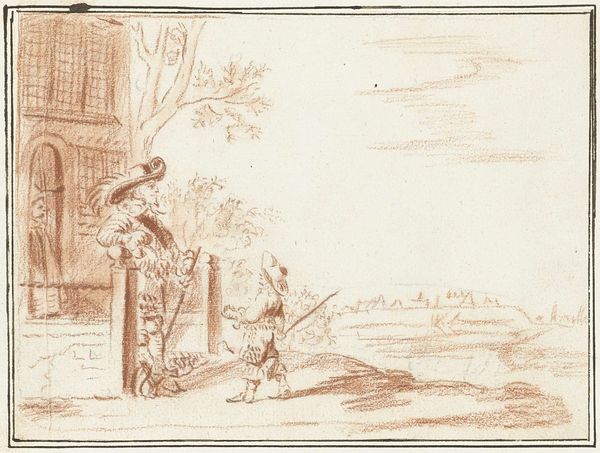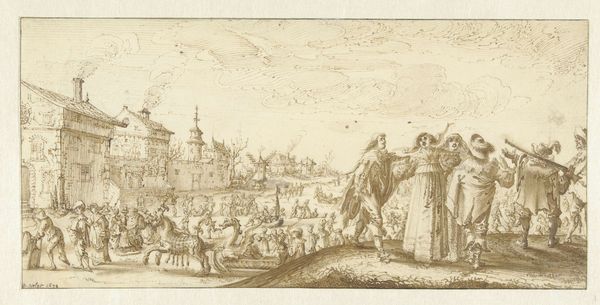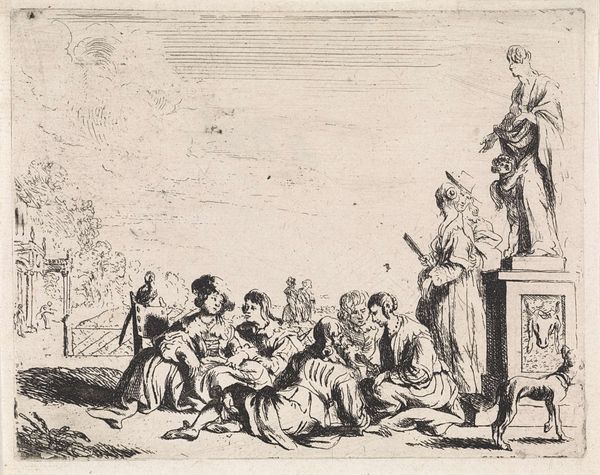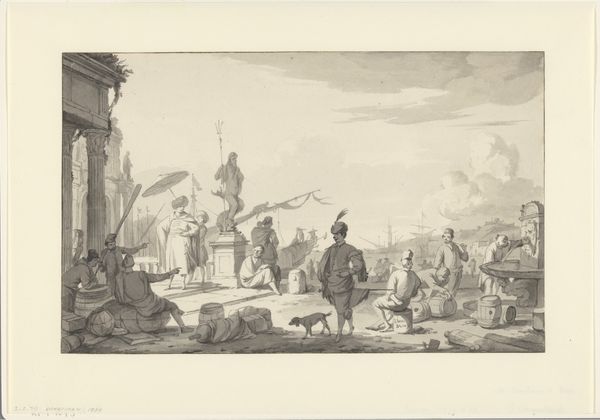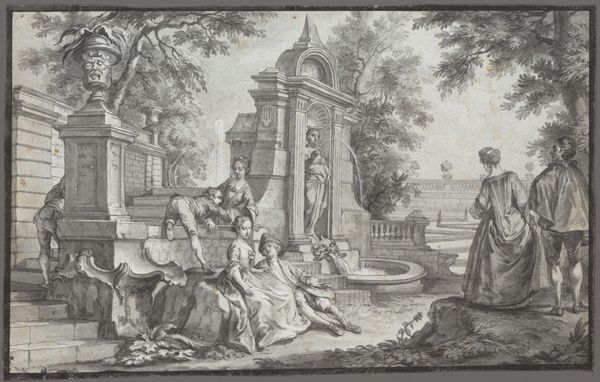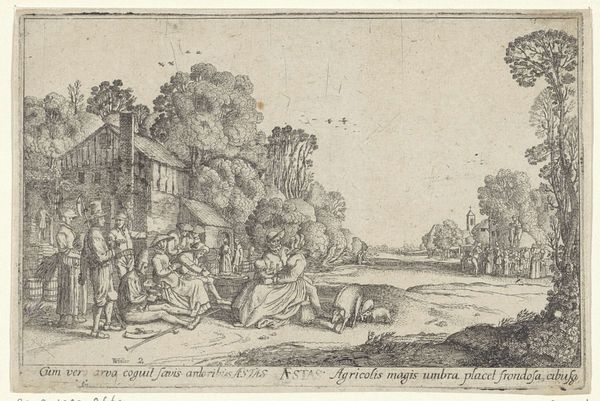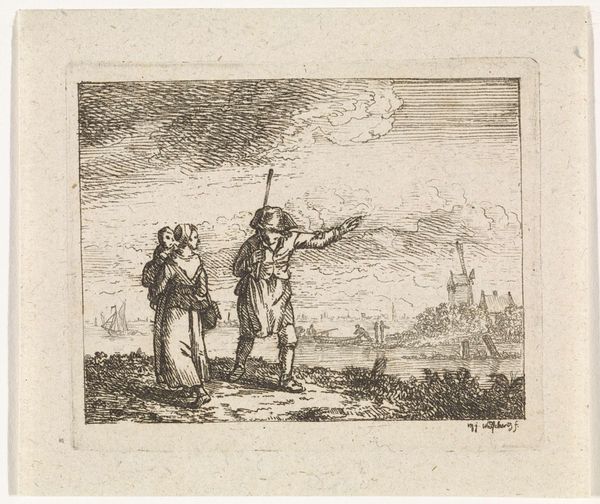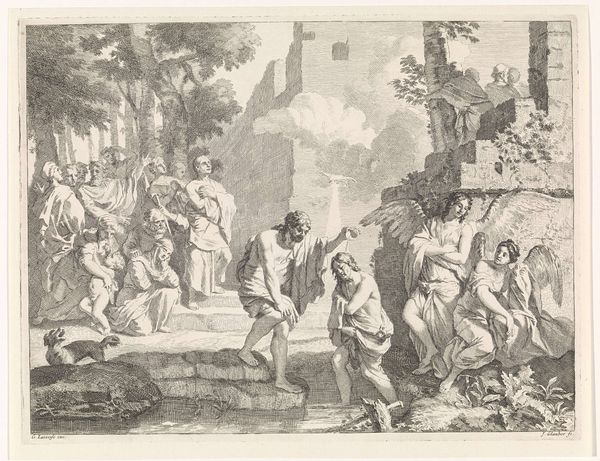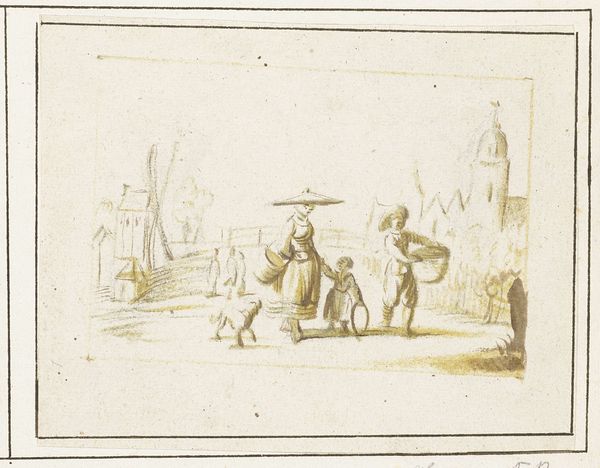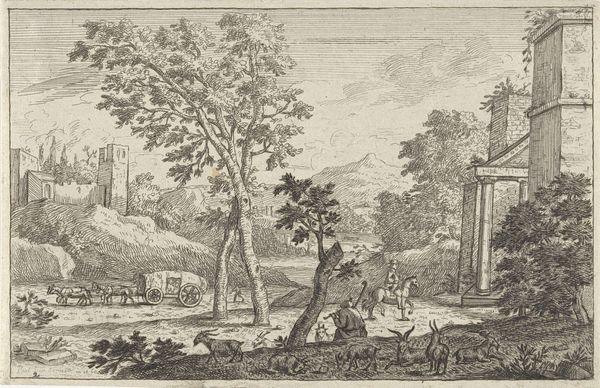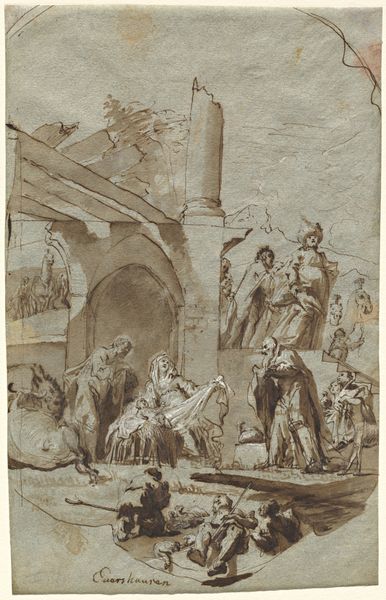
print, etching, engraving
#
baroque
# print
#
etching
#
landscape
#
genre-painting
#
engraving
Dimensions: height 157 mm, width 243 mm
Copyright: Rijks Museum: Open Domain
This print of a Mediterranean harbor scene was made by Isaac Vincentsz. van der Vinne using etching, sometime between 1680 and 1740. Etching is an indirect intaglio process, where the artist covers a metal plate with a waxy, acid-resistant ground. They then draw through the ground with a sharp needle, exposing the metal. When the plate is immersed in acid, the exposed lines are etched into the surface. The depth of the lines determines how much ink they hold, and thus the darkness of the printed line. In this scene, the controlled, precise lines create a sense of depth and detail, from the figures in the foreground to the distant ships. The artist’s labor is evident in the intricate network of lines, and the etching technique, which allowed for the reproduction of images, reflects a growing market for art and a shift towards more mechanized forms of production. The print then becomes an object of consumption, inviting reflection on labor, trade, and the social hierarchies of the time.
Comments
No comments
Be the first to comment and join the conversation on the ultimate creative platform.
